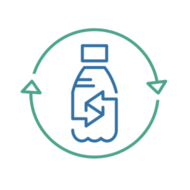This is an explanation of the current understanding about microplastics and additives bioaccumulating in marine organisms, as published in: Bioaccumulation and biomagnification of microplastics in marine organisms: A review and meta-analysis of current data Published In: PLoS One On: Oct 16, 2020 Key Takeaways: Summary Definitions Bioaccumulation The paper discusses bioaccumulation focusing on microplastics and …
Author Archives: David Evans
Summary: Potential Effects of Microplastics and Additives of Concern on Human Health
This is an explanation of how microplastics and additives can affect human health, as published in: A Detailed Review Study on Potential Effects of Microplastics and Additives of Concern on Human Health Published In: The International Journal of Environmental Research and Public Health Published On: Feb 13, 2020 Key Takeaways: Summary Effects of Micro and …
Microplastics in Patients Undergoing Cardiac Surgery
This is a summary and explanation of the following research paper: Detection of Various Microplastics in Patients Undergoing Cardiac Surgery Key Takeaways Study Summary The study aimed to investigate the presence of microplastics in human heart tissues and blood. Using advanced imaging techniques, the study analyzed tissue and blood samples from 15 cardiac surgery patients. …
Continue reading “Microplastics in Patients Undergoing Cardiac Surgery”
Cellular Uptake of Nanoparticles
This is a summary and explanation of the following research paper: Insight into Cellular Uptake and Intracellular Trafficking of Nanoparticles Key Takeaways for Relation of Nanoparticle Size to Cellular Update Review Summary This paper is a review on research to date on the cellular uptake and intracellular trafficking of nanoparticles. In regards to plastic particles …
Summary: Potential Toxic Effects of Micro- and Nanoplastics on Human Health
This is an explanation of the toxic effects micro- and nanoplastics can have on human health, as published in: Impact of Microplastics and Nanoplastics on Human Health Published In: Nanomaterials On: Feb 11, 2021 Table 1 of this review paper, referencing 28 different sources, summarizes the potential effects plastic particles can have on our health. …
Continue reading “Summary: Potential Toxic Effects of Micro- and Nanoplastics on Human Health”
Impact of Microplastics and Nanoplastics on Human Health
This is a summary and explanation of the following research paper: Impact of Microplastics and Nanoplastics on Human Health Published In: Nanomaterials On: Feb 11, 2021 This paper is a review and explanation of available research studies and literature. Key Takeaways: Summary of Review This study references 160 papers and also includes some diagrams that …
Continue reading “Impact of Microplastics and Nanoplastics on Human Health”
Plastic Particle Pollution in Human Blood
This is a summary and explanation of the following research paper: Discovery and quantification of plastic particle pollution in human blood Published In: Environmental International In: May 2022 Key Takeaways Summary of The Study Objective and Methodology The study aimed to measure plastic particles of size ≥700 nm in human blood. It employed a sensitive …
Continue reading “Plastic Particle Pollution in Human Blood”
Microplastics in Drinking Water: A Review and Assessment
This is a summary and explanation of the following research paper: Microplastics in Drinking Water: A Review and Assessment Key Takeaways: Review Paper Summary The research paper titled “Microplastics in Drinking Water: A Review and Assessment” presents a comprehensive analysis of the presence, sources, and potential human health implications of microplastics in drinking water. Here’s …
Continue reading “Microplastics in Drinking Water: A Review and Assessment”
Microplastics in air: Are we breathing it in?
This is a summary and explanation of the following research paper: Microplastics in air: Are we breathing it in? Key Takeaways: Research Paper Summary The study “Microplastics in air: Are we breathing it in?” focuses on the presence and potential health impacts of airborne microplastics, particularly fibrous microplastics (MPs), in various environments. Here are the …
Continue reading “Microplastics in air: Are we breathing it in?”
Microplastics in Street Dust (India)
This is a summary and explanation of the following research paper: Prevalence and characteristics of microplastics present in the streetdust collected from Chennai metropolitan city, India Key Takeaways: Research Paper Summary The research paper “Microplastics in City Dust” presents the following key findings: Assessment of Microplastic Pollution in Chennai This study, the first of its …
